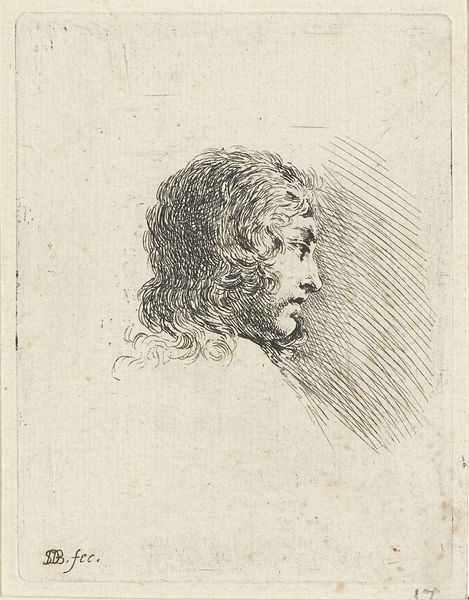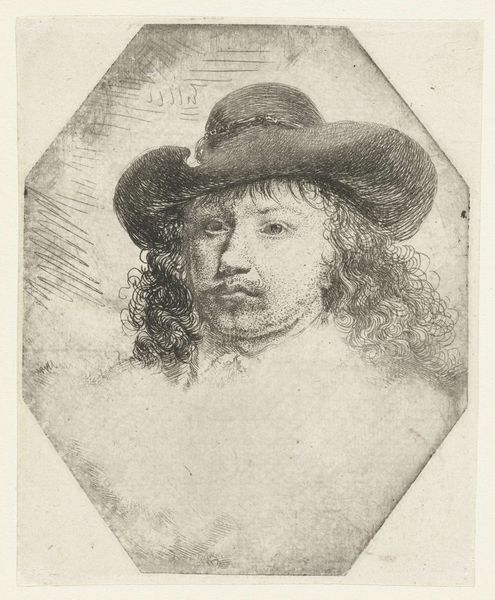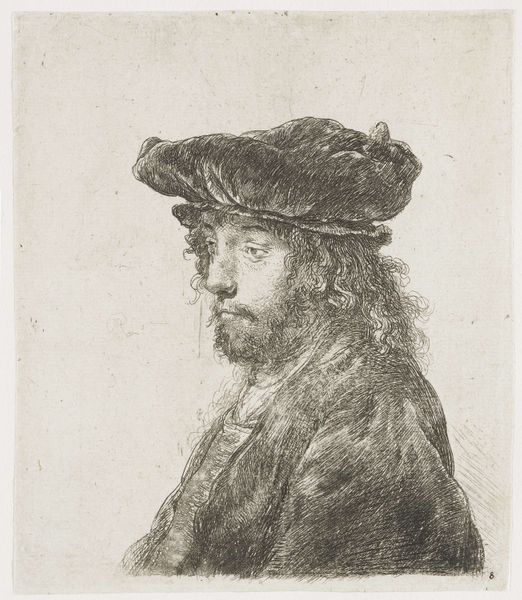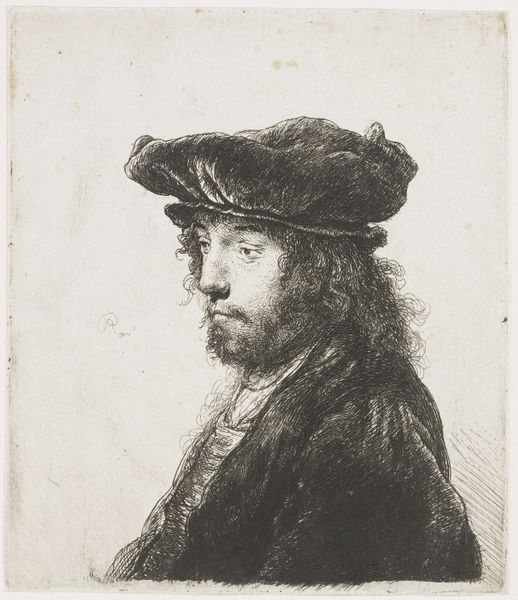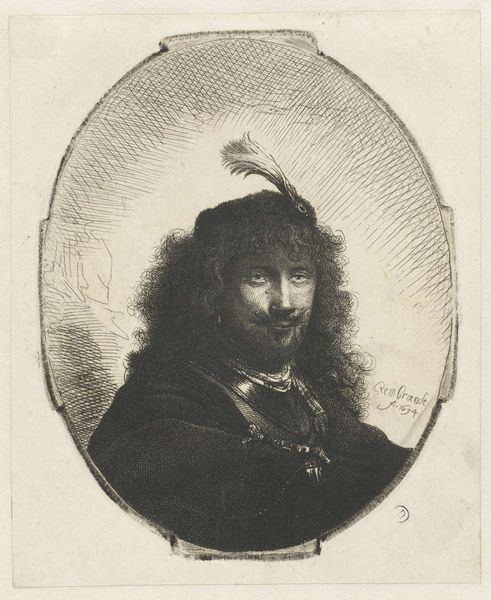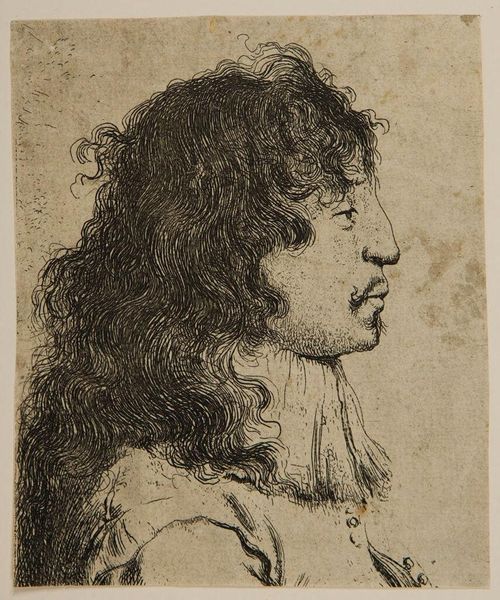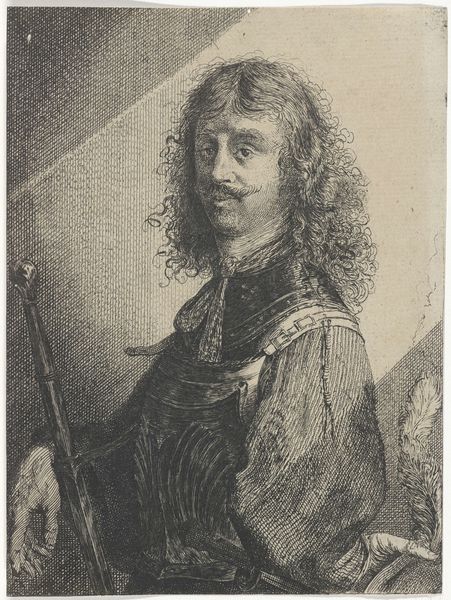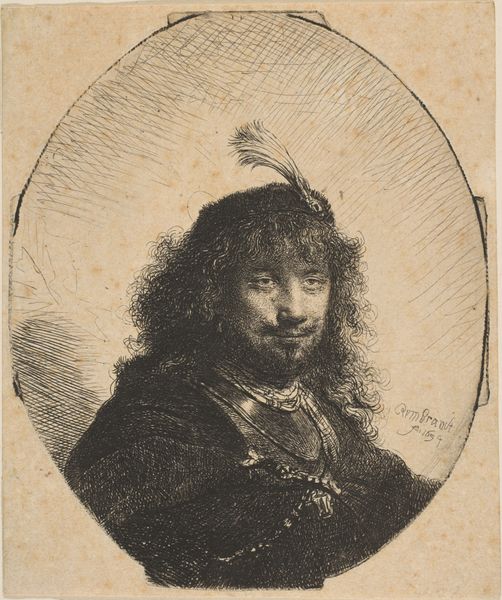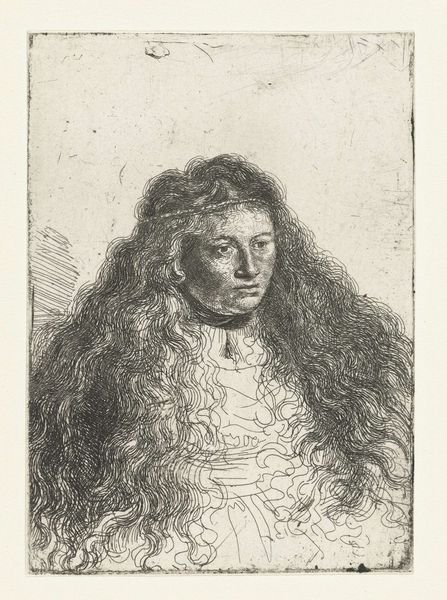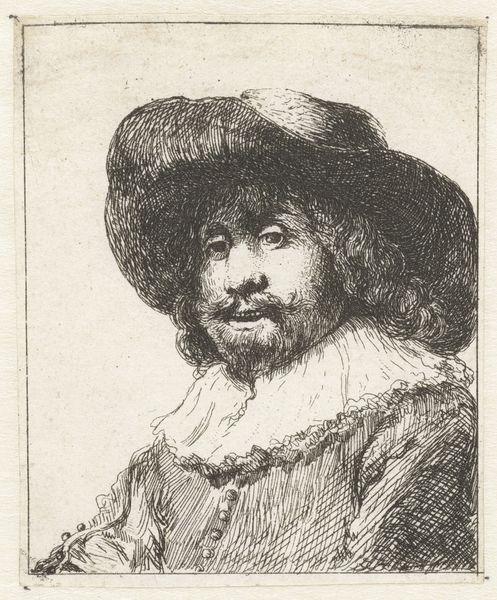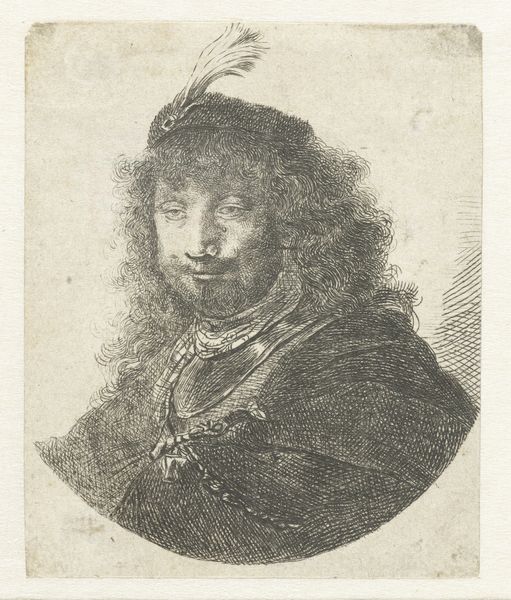
print, etching
#
portrait
#
baroque
# print
#
etching
#
figuration
#
history-painting
Dimensions: height 157 mm, width 142 mm
Copyright: Rijks Museum: Open Domain
Jan Lievens made this etching of a young man, sometime in the 17th century, in the Netherlands. The portrait gives us an insight into the social structures of the time, particularly the visual codes associated with class and status. The sitter's long hair and elaborate collar point to a certain level of affluence and belonging to privileged social circles. Lievens was working during the Dutch Golden Age, a period marked by significant economic growth, social change, and artistic innovation. Institutions like the Guilds played a crucial role in shaping the production and reception of art. Understanding the historical context in which Lievens operated – including the patronage system, the art market, and the influence of religious and political factors – is essential for interpreting the artwork. The Rijksmuseum, where this etching is housed today, also shapes our understanding of it. Historians can use period documents like guild records, letters, and inventories to understand the social and institutional context of art, revealing the complex web of relationships between artists, patrons, and audiences.
Comments
No comments
Be the first to comment and join the conversation on the ultimate creative platform.

